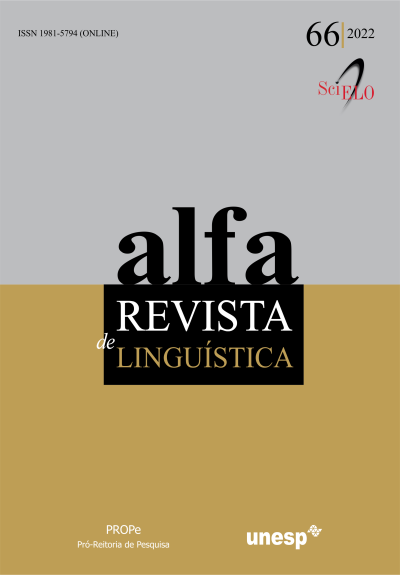Double rhotic consonants in intervocalic context
a study about the possibility of gemination in Ancient Portuguese period
DOI:
https://doi.org/10.1590/1981-5794-e12863Keywords:
Archaic Portuguese, syllable structure, gemination, Medieval Galician- Portuguese cantigas, rhotic consonantsAbstract
This article aims to study the Phonology of the ancient Portuguese from the troubadour period, specifically investigating the rhotic consonants found in 250 poems in medieval Galician-Portuguese. Our goal is to verify whether there were two rhotic phonemes in opposition at that time or, from the phonological point of view, the sound represented by <rr> could be interpreted as a geminate variant from the one represented with <r>. The analysis is based on non-linear phonological models. The method is based on the observation of the possibility of variation in the trill spelling, in order to appoint the relations existing between letters and phonemes, and on the study of the behavior of <rr> within the syllable and the word. The cases showed evidences that among vowels the double rhotic fills two slots in the syllable internal organization. We acknowledge the existence of only one rhotic phoneme in Archaic Portuguese, the weak-r, which phonetically presents two variants, a simple one, represented by two graphemes (<r>/<rr>), and a geminate one, represented by the double rr (<rr>).
Downloads
Downloads
Published
How to Cite
Issue
Section
License
Copyright (c) 2022 ALFA: Revista de Linguística

This work is licensed under a Creative Commons Attribution 4.0 International License.
Manuscripts accepted for publication and published are property of Alfa: Revista de Linguística. It is forbidden the full or partial submission of the manuscript to any other journal. Authors are solely responsible for the article's content. Translation into another language without written permission from the Editor advised by the Editorial Board is prohibited.

